|
|
Chapter Two: Jusas Christ Superstar

In May 1972, the first Australian production of Jesus Christ Superstar opened at the Capitol Theatre in Sydney. The rock opera, created by Tim Rice and Andrew Lloyd Webber, was a huge success around the world, as it was in Australia. The show was not without controversy though, as many religious groups did not agree with some aspects of the play. Regardless, many current and future stars joined the cast, including Jon English, Marcia Hines and John Paul Young. The production moved around to various locations, including the Palais Theatre in Melbourne, eventually putting on over 700 performances before closing in February 1974.
The success of Superstar meant that a second Australian run was planned, featuring returning lead stars Jon English (Judas) and Trevor White (Jesus). Harry M. Miller returned to produce the play, which gave the production instant credibility. Harry had introduced the rock opera phenomenon to Australia in 1969 with a production of Hair, followed by Boys In The Band, and Grease. Naturally, Miller gained a reputation for finding talent, and creating opportunities for young people in the field of entertainment. The 1975 Superstar rock opera featured over 50 cast members, a full orchestra and a rock band. At a cost of over $600,000, the entire production had enhancements, with a breathtaking illuminated stage and specially designed sound system. Like the previous production, the show had an open-ended finish date, although it was expected to last two years. The show planned to travel throughout cities such as Brisbane, Sydney, Melbourne, Adelaide, Perth, and locations in New Zealand. Cast recruiting notifications appeared in publications throughout Australia in March 1975.
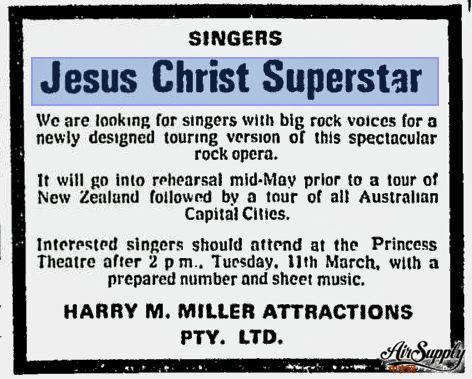
Original Casting Call - March 5, 1975
Graham auditioned on the advice of a friend named Dorothy Whittle. “She rang me up and said, ‘Have you seen the ad in the paper for Superstar?’” Graham mentioned that he had in fact seen it, but was not interested because he could not dance, and considered himself a songwriter who hadn’t had any songs published. Dorothy told him that she had a very strong feeling that he should go and audition and that it would be a turning point in his career. With much hesitation, Graham convinced himself to apply despite his long-held fear of auditions.
On March 11, Graham tried out for Superstar in the Princess Theatre. “When I got to the audition in Sydney, there was a huge line of hopefuls. It was a very unnerving experience as there were so-called ‘professional auditioners’ for theatrical shows who would intimidate the first time applicants,” recalls Graham. “One professional asked me what I was going to sing, to which I replied, the Roberta Flack and Donny Hathaway version of ‘I Who Have Nothing.’ They said that six guys had performed that song yesterday, and none of them got accepted into the production.” As a result, Graham was almost certain he would not win a position, and became even more nervous when his turn was called. “I walked in and they asked me to stand in the middle of the stage with a giant spotlight. I thought, ‘Oh Blimey, they are going to look at me as well.’ I was so nervous!”

Graham Russell & JCS Cast
Russell, now separated from his wife, was living north of Sydney when he first heard about the casting call from his girlfriend Karen, who saw the ad in a newspaper. Russell missed the Sydney auditions, but to his surprise, more auditions were to take place in Melbourne. Karen encouraged him to audition, but Russell was hesitant because he had almost no musical experience, besides his short stint playing drums in 19th Generation. “I used to sing in the shower and stuff, and I was living with a girl at the time. She used to always say, ‘You know, you’ve got a real good voice. Why don’t you try and do something with it.’ I used to tell her that I was not good enough,” explains Russell. “But you know, it just never occurred to me that that’s what I should do. I used to sing along to records. When the Beatles came along, I used to go into my bedroom with a record player with a microphone in it, and strum this piece of wood. Pretend that I was a Beatle.”
After much encouragement, and what Russell describes as ‘nagging’ from Karen, he decided to audition. He went to the Superstar auditions in Sydney. But he misread the announcement and arrived at the tryouts after they had finished. To his surprise, more auditions were to take place in Melbourne. “I had to fly down to Melbourne and I didn’t have very much money,” he said. “I was so naive about getting into the play that I went to a music store on the way and looked at some songs which I thought I could sing. So I took one off the shelf, and my audition piece was ‘Bridge Over Troubled Water.’ I didn’t know if it was in the right key for me. I walked into the auditions and saw 300 people. I was stunned! I got discouraged and walked out, then finally forced myself to turn around and go back.”
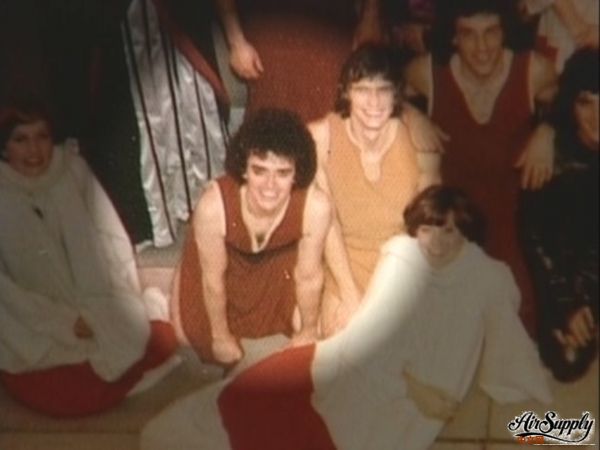
Russell Hitchcock & JCS Cast
Russell and Graham both landed positions in Superstar. Graham got a call from the producer’s office two weeks after his rehearsal and was assigned the role of apostle. He felt his height (6’5”) was an advantage, and perhaps helped him win the job. The previous production of Superstar had had an extremely tall cast member, and Graham could fit into his costume, thus saving the crew from having to make another outfit.
Superstar executive producer, Richard Harper, asked Russell to return for several auditions before offering him a role. Russell was extremely nervous as he waited for the phone to ring. “I felt like a defective car,” he said. “I got recalled like three times. The last time they said, ‘We’ll offer you a part in the show.’ But I still had not sung anything until I was twenty-five.”
Superstar rehearsals began in Sydney on May 12, 1975. This allowed Graham and Russell to meet for the first time, an encounter Russell remembers very well. “It was the first day of rehearsals, and we were doing some exercises and some sort of dance routines,” he said. “We had to run across the stage with our arms behind us or something, which looked really silly. There would be two diagonal lines that people would have to cross, and Graham did it and fell over, twisting his ankle in the process. It was just the first day of rehearsal, and just the first disaster. It took about ten people to lift him, and he was brought over to my attention this way.” “Yeah, Russell and another apostle grabbed me and took me over to the washing machines,” said Graham. “He dunked my foot in the hot washer and then the cold one. Luckily, I was back on my feet in two days.”
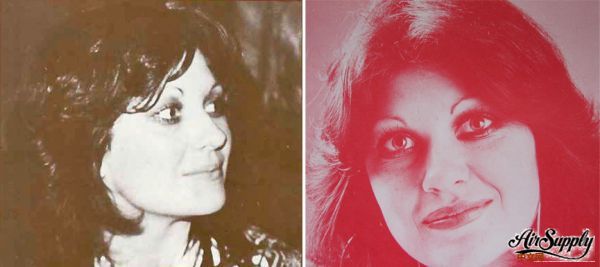
Chrissie Hammond
A few weeks into rehearsals, Russell took notice of Graham’s musical talent when he overheard him playing guitar with another cast member. “It was in the ticket box in this theatre we were rehearsing in, and he was serenading a women I think,” claims Russell. Graham later described the girl as a friend of his from before the show. She was Chrissie Hammond from Melbourne, whom Graham had sung with when making the rounds in small bars and clubs. She had a terrific voice, and they got together during breaks in rehearsal to sing Graham’s songs. “As I approached them, I noticed that Graham was playing something I had never heard before, and it was obvious that it was one of his own songs,” said Russell. “I was just dumbstruck, as Superstar was my first involvement in professional music, and I had never met anyone who wrote their own songs.”
Born in London, Chrissie Hammond emigrated to Australia with her family when she was three years old and lived, as she puts it, all over the place. At age 14 she had teamed up with her elder sister, Lyndsay, to perform as a folk duo in Melbourne coffee houses. “We got our first break when both of us were in our teens,” said Chrissie. “We were very enthusiastic and rather naive. We used to perform 65 songs in four hours - for the grand fee of $15 between us.” For the next three years Chrissie worked both solo and with a group, taking engagements in television, hotels, concerts and at recording sessions. She remembers when she first met Graham in 1972. “One day we [Chrissie and Lyndsay] passed by a cafe advertising for folk bands. With all the cockiness of youth I said to Lyndsay, ‘That’s us!’ We walked in there, told them that we were what they’d been waiting for, and were asked back that night to audition. We did five hours all told on stage! Unpaid as well. That was an experience. But a certain Graham Russell was in the audience.”

Jesus Christ Superstar made its debut performance at the historic 1,520-seat Civic Theatre in Newcastle, New South Wales, in mid June. This was a part of a series of preview performances before the New Zealand tour in July, where they performed nightly at 8:30 p.m., plus Fridays and Saturdays at 5:45 p.m. (no Sunday performances). “The first day of the show [in Newcastle], 30 of us sang together, and I couldn’t believe how beautiful it sounded,” said Russell. “I instantly realized that it was what I should have been doing all my life.”
Like the first production in 1972, most reviews of the show were excellent:
Now a new production of Jesus Christ Superstar has been packing ’em in at the Civic Theatre in Newcastle, and not surprisingly, plenty of Sydney people have made the trip north to see it. I did last weekend and enjoyed a stunning new production of this classic rock opera. After seeing the original Sydney production four times, I didn’t believe that producer Harry M. Miller could come up with any improvements - I was wrong! - Sydney Mirror
It more than lived up to its promise. Visually the show reaches technical heights unlike any other. It’s one of the slickest, most spectacular productions you could ever see. Jesus Christ Superstar is now and probably always will be a supershow. - Adelaide Advertiser
But not all reviews were positive. The Age in Melbourne wrote a scathing review after the opening performance in Melbourne’s Palais Theatre:
Despite rumours to the contrary, the show basically is the same as the one we saw before - a little more streamlined perhaps. The characters have little depth or dimension. Jesus especially - through no fault of singer Trevor White - is portrayed as an insipid, almost vapid man. The only person of any humanity roaming the highly mechanized stage is Judas, wonderfully captured by Jon English. Musically, the show also leaves much to be desired. Rhythms seem rushed and the libretto is trite, which doesn’t permit much sensitivity. - The Age
“Midway through 1975 we took an entirely revamped production on a tour of New Zealand,” said Harry M. Miller in his 1983 book titled My Story. “The new designs and staging had given us enormous trouble before we got them right. The show was played on a false perspex stage lit from underneath. The effect was fantastic except that during try-outs the stage kept melting. No one could work out why this was happening until I discovered that incandescent - instead of fluorescent - lighting was being used. We rewired the entire stage just in time for the opening in Newcastle, New South Wales, but I was still preoccupied with visions of a lake of molten perspex on the night the New Zealand tour opened in Auckland.”
Graham, Chrissie and Russell changed roles several times in Superstar. Russell was initially asked to be a soldier, which was a non-singing role. Eventually, the producers moved Russell into the chorus as an apostle. “There’s no doubt he had the best voice in the whole show,” said Graham. “But here he was in this vinyl soldier suit for about three months until we had to confront the director and say, ‘Hey, your making a big mistake here.’ Russell played Jesus once or twice, and he played Judas over a hundred times. He understudied every role except Mary Magdalene - he wouldn’t shave his legs.” Graham switched from apostle to Peter. Chrissie started as one of the apostles’ women, but soon took over the lead role of Mary Magdalene from 22-year-old Stacey Testro, who initially won the position over 200 singers who auditioned for the part.
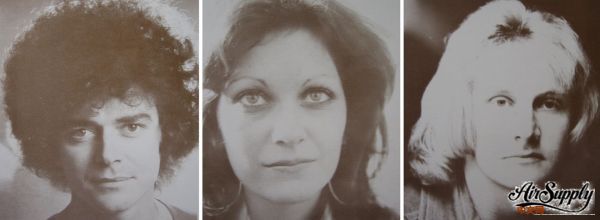
Graham and Russell became the best of friends, and their shared fascination with the Beatles provided more than enough music for them to emulate during practice. They sang together during lunch breaks and any other opportunity they could find. During Superstar’s four-month tour of New Zealand and for a short period in Australia, Chrissie, Russell and Graham performed in small bars and coffee shops, in what was essentially a vocal harmony group. They called themselves Hitchcock, Hammond & Russell, and they performed cover tunes, with some of Graham’s own compositions mixed in. Graham played acoustic guitar and Russell played conga drums, a talent he had just recently developed. “I started playing congas in New Zealand,” said Russell. “This guy within Superstar asked me to do something with him. He plays a mean slide guitar and sings blues, but it never eventuated. The congas are more a sort of security for me than anything else.”
Graham used the avenues that Superstar opened up for them by calling people in the music business and promoting themselves to record companies. Things began happening for the trio in Auckland, New Zealand, when they played support act for a concert that Jon English and Trevor White were doing. Suddenly their music appeared on New Zealand radio and TV. “We used to work everywhere,” said Graham, “especially New Zealand. It was amazing, the people just went mad. We did encores and all that sort of thing. I would go out and get these shows by throwing the Superstar name around, and that would get us in the door. We used to do all kinds of shows. We made videos, and this was in 1975, before videos were even invented. We had a three-part harmony that was incredible, and this was really the forerunner of the Air Supply harmonies. It wasn’t until we got to New Zealand that I learned that Russell played the congas - and that was six weeks later.”
Hitchcock, Hammond & Russell enjoyed the artistic freedom outside the realm of the highly structured Superstar, and it taught them valuable lessons in succeeding in show business. “The show ran for almost two years, and we did ten to twelve shows a week,” said Russell. “Once again, a great experience! I had never been involved in any kind of serious music at all, and came straight from an office job into Superstar. It taught us a lot about discipline, being focused on what you are doing during the show. Obviously we got to work with some tremendous artists, people who were very famous in Australia at the time. So we absorbed everything we could to become better performers when we actually came out on the road as Air Supply. As far as vocal training was concerned, the show took the edge off my voice.”
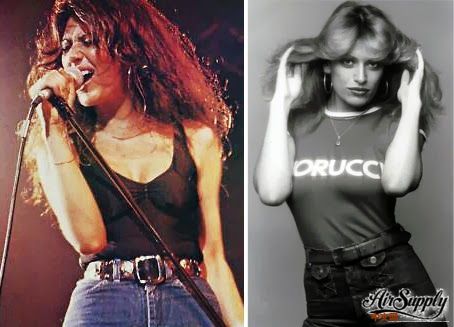
Shortly after the tour of New Zealand, Chrissie stepped down from her role in the harmony trio. She had lofty ambitions for a solo career in the music business, and her transition into the lead role of Mary Magdalene gave her a great deal of confidence. While still in Superstar, Chrissie searched for a manager (Brian de Courcy), with the intention of making it big in North America. “I’m hoping to record a single here in Melbourne,” said Chrissie. “The difficult thing is finding the right song with enough of me in it. The type of music I’m into flourishes over there [in America]. Australia offers a lot, but it has its limitations. And oh, I’d better not mention it, but it’s a very closed market.”
The solo gig did not work out for Chrissie, but she later teamed up with her sister, Lyndsay, to form the rock band Cheetah. They had several hit singles in Australia and parts of Europe, such as ‘Walking In The Rain,’ ‘Deeper Than Love’ and ‘Spend The Night.’ Many years later, Chrissie joined the cast of Cats to play the popular Grisabella character.
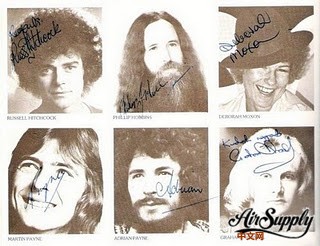
|
|